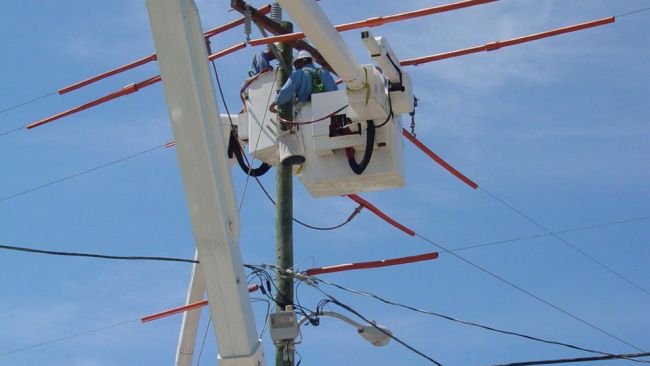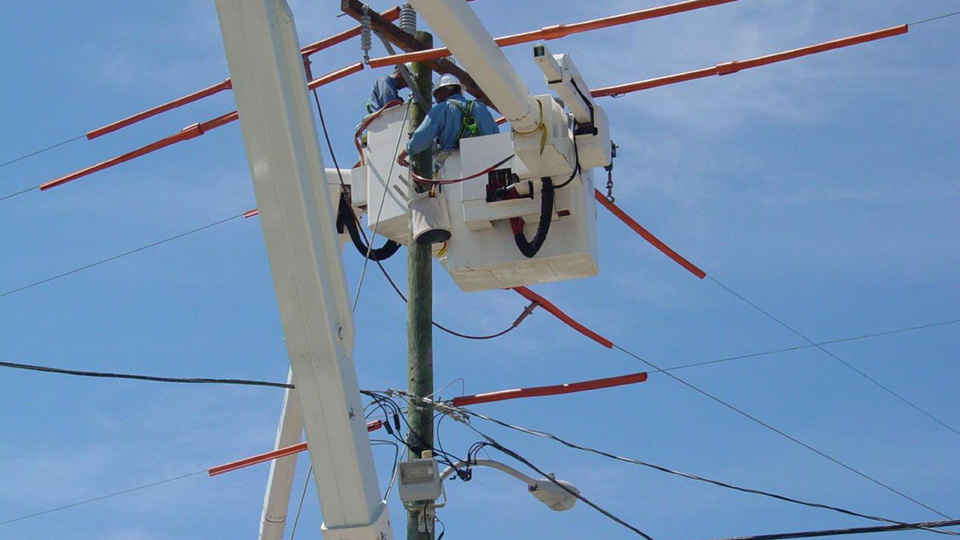
Voice of Experience: Incidents and the Failure to Control Work
Flashes and contacts continue to happen throughout the electric utility industry. All sectors, from the smallest contractor to the largest investor-owned utility, report incidents every day. I have seen reports that one contractor working a 23-kV circuit locked out the breaker twice in one day. Other reports now indicate that 2013 is trending even higher than last year for the first four months of the year. The industry is on course to meet the average of 24 to 28 fatalities documented in the utility and contractor North American Industry Classification System codes reported to U.S. Bureau of Labor Statistics.
I was recently invited to speak at a contractor workshop and was present during a review of incident reports. There were multiple contractors in the meeting and everyone had reports regarding everything from vehicle accidents to system interruptions to lockouts due to loss of control of moving energized conductors. All these types of incidents certainly make employees question the work procedures being scrutinized by the companies they work for. Incidents affect reliability and increase costs and penalties, but more importantly, someone will be injured or killed if they keep occurring. In the cases discussed, no injuries occurred, but there were system interruptions and damage.
Prevention of these sorts of incidents starts with a thorough job briefing. The events are usually related to the employee’s failure to identify special precautions, which is the third of the five steps of a job briefing. Sag of conductor, type of conductor, and condition of insulators and structures are just a few contributory causes. A lack of experience by employees performing the work also contributes to many of these incidents. Attrition is taking a great deal of experience out of the field employees.
System Interruptions
Let’s take a moment to discuss system interruptions. When lockouts and circuit operation occur, they typically take place in one of two locations. Flashes occur either at the immediate work site or, more often, midspan on either side of the pole being worked; sometimes they may happen one or two spans away from the work location. Many factors affect an employee’s ability to control the work and prevent incidents. A flash occurring at the immediate work area normally occurs from a lack of distribution cover-up. In the picture below, observe the lack of cover used by linemen who are preparing a pole for a reconductoring job.

This company’s employees don’t wear sleeves, and many companies have a similar policy. The wearing of sleeves and not covering up increase the risk to the employee. I have always had the opinion that sleeves have nothing to do with proper cover-up. In the October 2013 issue of Incident Prevention, I will address 29 CFR 1910.269(l), “Working on or near exposed energized parts.”
In the picture, look closely at the linemen’s position to exposed live parts and the failure to wear rubber gloves. Most importantly, notice that the second points of contact, paths to ground and points in the work area of difference of potential are not covered. This lack of proper cover-up and the failure to wear PPE increase the chance of a lineworker getting in series with and contacting two different points of potential. The lack of cover-up also increases the chance of a flash when there is a loss of control of any equipment or conductor in the immediate work area.
I took this picture as I was leaving a restaurant while on vacation. When I asked the linemen why there was a lack of cover and why gloves were not being used in the energized work area, they responded that they were in a hurry and that they weren’t going to get near the exposed parts. The belief that work can be completed without enough cover in place has claimed many lives in this industry. A few years ago, the Electric Power Research Institute and the National Institute for Occupational Safety and Health performed research on fatalities in the electric utility industry. The research illustrated how lineworkers fall victim to improper use of PPE and a lack of cover-up. Even when proper training had been provided, the decision by lineworkers to not cover up and wear rubber gloves and/or sleeves was the cause of contacts and fatalities.
Second Cause of Contacts
A second cause is employee failure to properly identify phasing when applying mechanical jumpers, which usually results in a primary cross-phase when applying the temporary mechanical jumper. This happens most often when a reconductoring job is in process or a junction pole is being changed out. It doesn’t happen often, but when it occurs, it usually causes injury to employees in the immediate work area. Employees who are working together on the pole and properly communicating normally control these situations. Employees working alone on the pole or in a substation must use extreme caution jumping phases out, as well as correctly use insulated standoff tools to maintain positive control of mechanical jumper ends.
The observer on the ground and communication by employees on the pole are extremely important in preventing this type of contact from happening. Of course, when employees feel unsure about a situation, using a phasing tool is the safest method to assure proper phasing.
Flashes and incidents that happen one or two spans away are almost always due to the failure of employees to recognize the differences in sag in conductors or the transition of flat to vertical construction on adjacent structures. The industry is now so accustomed to using material-handling buckets that we focus more on the structure to be worked than the adjacent structures and spans of conductor on either side of the work area. When material handlers are used in moving conductors, the employee doesn’t have a feel for the tension and sag of conductors. First, the conductors are untied from insulators at the work site and the weight and tension are going to balance in the spans on either side of the work site. If sag is not equal, the conductor will slide through a roller head until equal tension is achieved. Second, if there is a transition from horizontal to vertical, or it is vertical construction each way, there might be enough slack or movement in the conductor to permit contact in midspan or even the next span if the adjacent structure is a suspension pole. The disc insulators on the suspension pole are allowed to move one way or the other when tensions equal in the two spans. When moving the conductors from the insulator, additional tension or slack is placed on the conductor by movement; in turn, this causes increase or decrease in sag in the adjacent spans. This action can result in contact with phase conductors or the neutral.
Failure to control a situation and task is a direct result of poor judgment or a lack of experience on the part of the employee. Supervision and safety leadership by other employees play a role in incidents, but supervisors are not always present and other employees are not acting as qualified observers and addressing unsafe actions when hot work is being performed. All types of incidents can be prevented by correctly planning jobs and maintaining focus and awareness as the jobs progress.
About the Author: Danny Raines, CUSP, safety consultant, distribution and transmission, retired from Georgia Power after 40 years of service and opened Raines Utility Safety Solutions LLC, providing compliance training, risk assessments and safety observation programs. He is also an affiliate instructor at Georgia Tech Research Center OSHA Outreach in Atlanta. For more information, visit www.electricutilitysafety.com.

